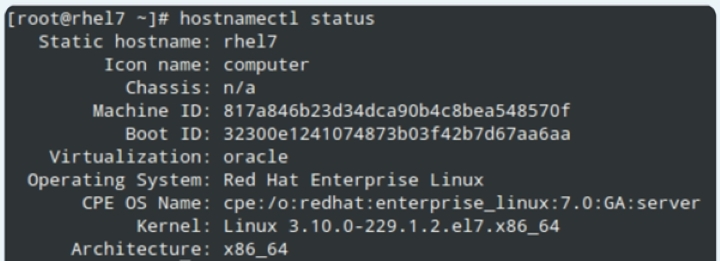
 Data Structure
Data Structure Networking
Networking RDBMS
RDBMS Operating System
Operating System Java
Java MS Excel
MS Excel iOS
iOS HTML
HTML CSS
CSS Android
Android Python
Python C Programming
C Programming C++
C++ C#
C# MongoDB
MongoDB MySQL
MySQL Javascript
Javascript PHP
PHP
- Selected Reading
- UPSC IAS Exams Notes
- Developer's Best Practices
- Questions and Answers
- Effective Resume Writing
- HR Interview Questions
- Computer Glossary
- Who is Who
Securing SSH, Setting Hostname and Enabling Network Services
To secure SSH, begin by altering the default SSH port to a non-standard one, employing a solid secret word or key-based verification, and debilitating root login. Furthermore, execute firewall rules to permit only trusted IP addresses to associate. Another option is to set the hostname to an interesting and identifiable title to organise administration. At last, empower fundamental arrangement administrations such as firewalls, interruption discovery frameworks, and programmed security upgrades to guarantee continuous security. These measures altogether improve the security of the SSH server, making it less vulnerable to unauthorised access and potential assaults.
Methods Used
Normal approach
Normal Approach
Securing SSH, setting hostnames, and empowering administrative accounts regularly include a few steps. Firstly, to secure SSH, the default harbour is changed to a non-standard one, and solid verification strategies like key-based confirmation are implemented. Root login is crippled to anticipate unauthorised access. Furthermore, the hostname is set to an interesting and significant title, encouraging organised administration and distinguishing proof. In conclusion, arrangements such as firewalls, interruption location frameworks, and programmed security overhauls are empowered. This combination guarantees strong security measures are in place, protecting the SSH server from potential assaults. Moreover, executing appropriate firewall rules and permitting access, as it were, from trusted IP addresses includes an additional layer of security. Frequently upgrading the framework and checking logs are basic to preserving a secure, organised environment.
Algorithm
Introducing SSH ?
Install the OpenSSH server bundle on your framework. The bundle title may shift depending on your working framework. For example, on Ubuntu, you'll be able to run the command: sudo apt-get introduce openssh-server.
configuring SSH ?
Open the SSH server arrangement record. On Ubuntu, it is found at /etc/ssh/sshd_config.
t the SSH harbour to a non-standard number (e.g., 2222) by adjusting the harbour mandate. Make it beyond any doubt to select a harbour not utilised by any other service.
sable root login by changing the PermitRootLogin mandate to no.
nfigure SSH to permit, as it were, particular clients by including or altering the AllowUsers mandate taken after the usernames. For case: AllowUsers Alice Bob
able key-based verification by setting PasswordAuthentication to no. Create SSH key sets for authorised clients and duplicate their open keys to the server's /.ssh/authorized_keys file.
rewall Configuration ?
Configure the firewall to permit approaching associations on the SSH port you indicated. The strategy depends on your firewall programme or working framework. For example, utilising UFW on Ubuntu, you'll run:
sudo ufw permit 2222.
Restart SSH ?
After making the fundamental changes, restart the SSH service for the alterations to take effect. On Ubuntu, you'll run:
sudo benefit ssh restart or sudo systemctl restart sshd.

Benefits of SSH
You dodge being seen by irregular scans.
It is more troublesome to discover your server. Most of the assaults will check the default harbour or a few variations of it, but will move on once the association is refused.
The SSH daemon can take a break since it won't get association demands from scripted assaults. The server stack is diminished, and the log record remains clean, sparing you time in reviewing it.
You don't get as many alerts for failed logins. On the off chance that you're employing a non-standard harbour and somebody still tries to access your server, it probably means that your server is particularly being targeted and the alert isn't coming from a scripted attack.
You are less exposed to being hacked due to bugs in SSL or weak private keys.
Most programmers will be repulsed if they see that you are not utilising the default harbour. It'll be a sign that the server is appropriately secured, and there are likely other security measures taken as well, making your server an undesirable target.
Conclusion
This article examines the methods of securing SSH, setting the hostname, and empowering organisations. It gives a step-by-step guide on how to improve the security of an SSH server by changing the default harbour, executing solid verification strategies, and debilitating root login. Also, it clarifies the significance of setting a special hostname for an effective organisation. Besides, the article emphasises the noteworthiness of empowering basic organisational administrations like firewalls, interruption discovery frameworks, and programmed security upgrades to guarantee progressing assurance. By taking after these hones, the article highlights how the general security of SSH communication and its framework can be essentially moved forward.

